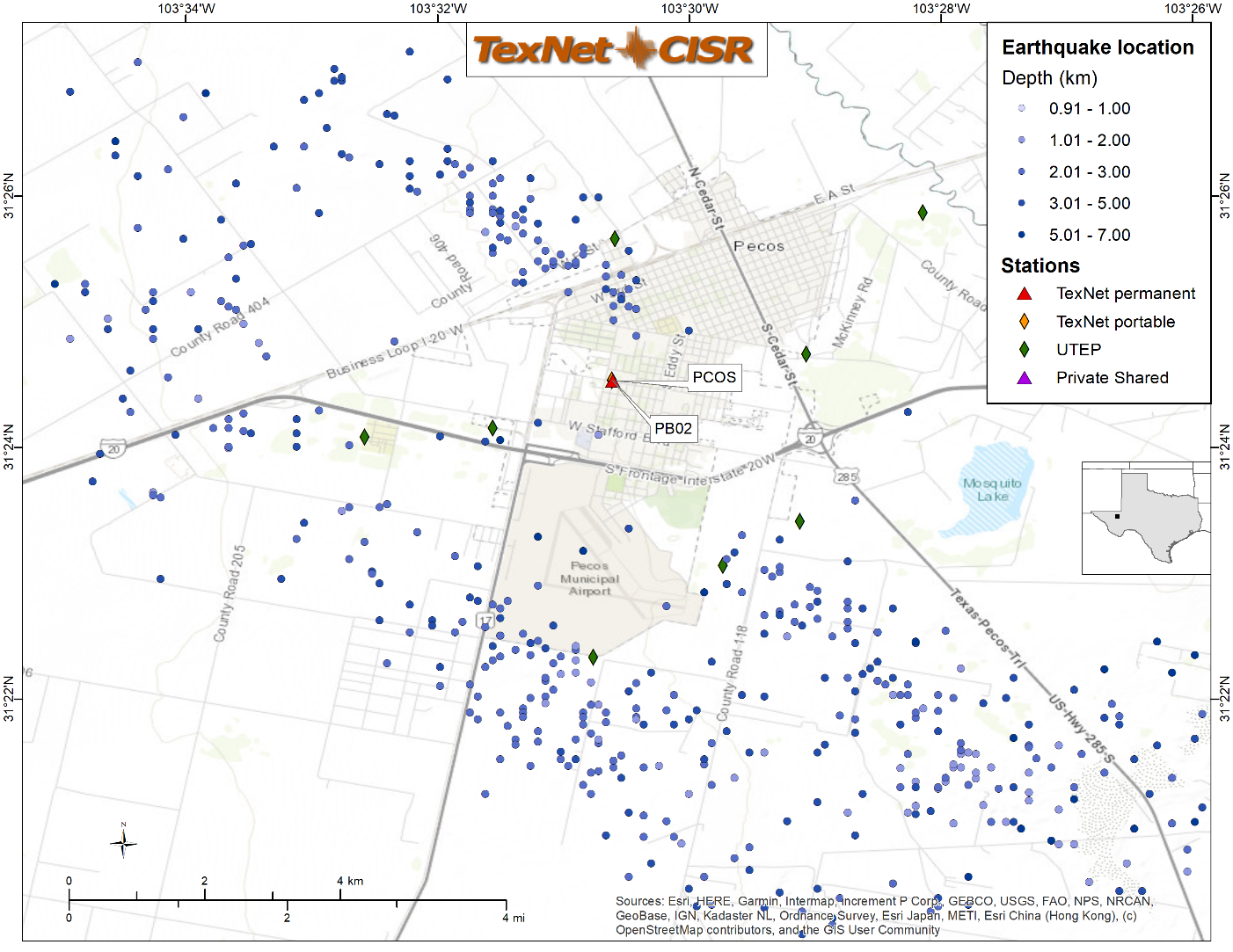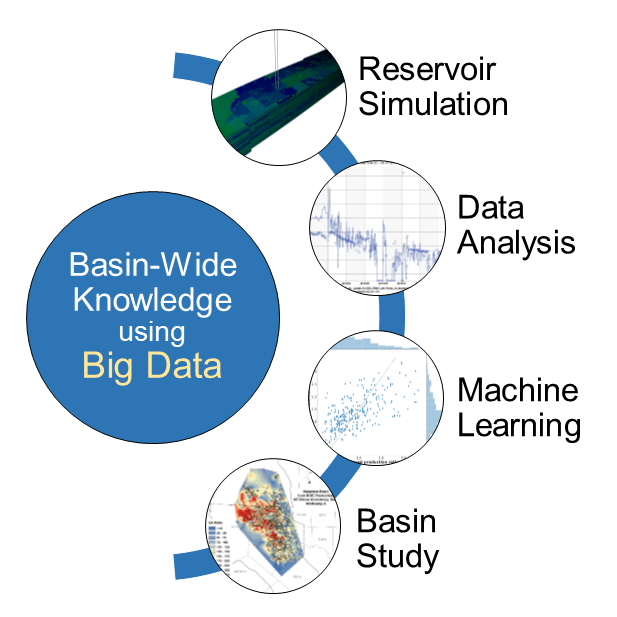November 16, 2020

Patricia Martone
TexNet Operations: Duty Seismologist

Seismic station deployment and detected/verified earthquakes in the broader area of Pecos, Texas.
I work on the Texas Seismological Network (TexNet) team here at the Bureau. My most important role on this project is serving as one of the Duty Seismologists. When I am on duty, my primary function is to identify and locate earthquakes, calculate their magnitude, and publish the events on the TexNet website. For earthquakes of magnitude 3.0 and above, this is a 24/7 job. This shift to a 24-hour network for high-magnitude earthquakes is a recent development and is an exciting new step for the team. It is a sign of how much we have grown as a network and reflects our commitment to providing the public with prompt information regarding seismicity in Texas.
One of the TexNet research projects that I have been working on for a few months is a collaboration with University of Texas at El Paso and involves using a closely spaced array of about 40 geophones, along with the TexNet real-time seismic stations, to locate earthquakes in the Pecos area in West Texas. My part in this has been running our automatic earthquake detection system on the data and leading a team of analysts in identifying and locating the earthquakes that occur beneath Pecos City (see figure). Having this dense array of geophones that are very close to the epicenters of the earthquakes can help with constraining their depths. This has resulted in the improved detection and location of the earthquakes underneath Pecos City.

Shayan Tavassoli
Reservoir Engineering of Tight Oil Resources

Reservoir engineering workflow of tight oil resources.
Oil production from tight oil resources accounted for 63% of total U.S. crude oil production in 2019, and the U.S. crude oil production forecast is more than 13 million barrels per day in 2020. Surviving oil production from tight oil resources is paramount if the United States wants to reduce oil imports and maximize its domestic oil production.
Production from tight oil resources is made challenging by formation complexity, drilling and completion techniques, and inevitable uncertainties in production data. Additionally, the extensive production from tight oil resources and massive infill drilling has resulted in production interference in current hydraulically fractured horizontal wells. Today, this is one of the most challenging problems for the industry, especially in North American production of unconventional resources.
As the main reservoir engineer at the Bureau's Tight Oil Resource Assessment (TORA) consortium, I solve these complex and data-driven problems using novel data analytics and advanced numerical simulations. My work can help the industry to better understand the current production challenges in tight oil production and provide strategies for future drilling and completions to maximize recovery factor, minimize the infill drilling, and mitigate destructive well interference.